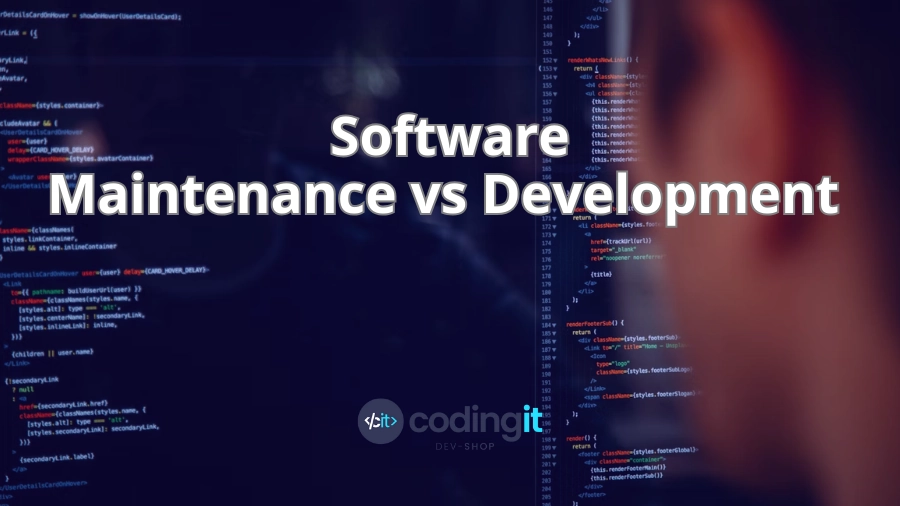CTOs from early-stage startups often ask us how to balance the drive for new features with the need to maintain and improve the existing product. The truth is you can’t afford to choose one path over the other. The real challenge is finding a balance that fits the company’s broader strategy, matches market realities, and meets the customers’ needs.
It’s a tightrope walk that requires careful consideration of multiple factors, including the current maturity of your product, user feedback, competitive threats, and, of course, the vision for where you want the company to be a year—or even five years—from now.
This is especially true when every hour of development time and every dollar of budget is precious. Get it wrong, and you could see your team spinning its wheels, costs ballooning, and customers drifting away to competitors who have nailed their priorities.
What’s the way forward then? It starts with a deep understanding of your unique context. Ultimately, the goal is to drive both short-term wins and long-term growth, aligning tech decisions with the broader business vision. So, let’s analyze what both options can give you and hopefully, that will help you make the right decision.

The Case for Maintenance
Think of your software as a high-performance vehicle. It might have all the latest features and the sleekest design, but if the engine sputters or the brakes fail, it won’t matter how fast it can theoretically go. No one will want to drive it.
The backbone of any successful software product lies in its day-to-day performance. It needs to deliver a seamless, consistent user experience. Nobody cares about cutting-edge functionality if the app crashes, if bugs slow them down, or if security vulnerabilities make them wary of entering their data.
Every line of code written has the potential to become a liability. Without regular upkeep, that debt grows like compound interest, slowly eroding the software’s efficiency, security, and ability to scale. At some point, that debt will come due — in the form of downtime, customer dissatisfaction, or, worst of all, a major security breach.
The Case for New Features
Developing new features is a powerful way to meet the changing needs in the market, boost user engagement, and stay ahead of the competition. Prioritizing new feature development makes sense when your current product is stable and well-regarded but could use an injection of fresh energy.
Look for signs that customers are asking for more — maybe they’re requesting specific functionalities repeatedly, or your competitors are rolling out updates that you don’t yet have. When that happens, it may be time to act.
Building new features can also open doors to new revenue streams and expand your market reach. In this field, custom software development allows your company to explore new segments, appeal to different customer bases, or even create brand-new categories.
Assessing the Current State of the Software
As a CTO, one of your key responsibilities is to ensure that your product remains competitive, reliable, and efficient. But before jumping into the exciting world of innovation, you should ask yourself: Is the product ready for this next step, or does it need some tuning first?
Consider metrics like error rates. Are they higher than they should be? What about load times? Are users experiencing frustrating delays? Then there’s user feedback: Are there recurring complaints or suggestions that point to underlying issues? And the customer support queries? A surge in requests can often be a sign that something isn’t working as expected.
To get a clear picture, leverage tools designed to give you actionable data. Application Performance Monitoring (APM) software, for example, can highlight slowdowns or failures in real-time, while user analytics platforms can show you exactly how people are interacting with your product.

Developing a Software Maintenance Plan
A well-thought-out software maintenance plan is a necessity if you are fully invested in your business. So, where do you start? The first step is to set clear objectives. Pinpoint which parts of your software need regular updates or enhancements, and rank these tasks based on how they impact performance and user satisfaction.
Next, you need to focus on smart resource allocation. A right balance of skills, tools, and time to handle maintenance tasks without stalling innovation. It’s a delicate dance—keeping the engine running while also finding time to build a better engine.
Understanding the different types of software maintenance will help you make the right choices for your plan. You have four main types:
- Corrective: Think of it as your emergency response team. Fixing bugs and issues as they pop up is its main objective. It focuses on quick fixes to ensure that your software continues running smoothly without disrupting business operations.
- Adaptive: This is more of a strategic play, keeping your software in sync with changing environments, like new operating systems or compliance rules. It’s about ensuring your software adapts seamlessly to external changes, maintaining its relevance and usability.
- Perfective: Your chance to improve your software by adding new features or refining existing ones to enhance the user experience. This type of software maintenance aims to deliver a better user experience, making the product more valuable and engaging over time.
- Preventive: A proactive defense strategy. Anticipating potential problems and nipping them in the bud before they affect your users. It involves regular monitoring, updates, and optimizations, ensuring the software remains robust and minimizing the risk of costly downtimes.
Risks of Over-Focusing on New Development
Innovation is undeniably the driving force behind any tech company’s growth and relevance. However, an overzealous focus on pushing out new features can become a double-edged sword. The rush to innovate, while critical, can sometimes lead to unintended consequences that undermine the very goals you’re trying to achieve.
When the push for new development becomes relentless, it often comes at the expense of the core product’s stability and coherence. You might find yourself adding layer upon layer of functionality, without sufficient consideration for how these new pieces fit into the existing architecture. This can result in a product that’s not only complex but also brittle: a house of cards waiting for the smallest disruption to bring it down.
The most significant risk of over-focusing on new features lies in how it impacts your customers. Imagine a user navigating a product that’s overloaded with half-baked features, encountering glitches, slowdowns, or outright failures. The initial excitement quickly fades, replaced by frustration and distrust. The shiny new features you hoped would delight your users could end up driving them away if the core experience feels clunky or unreliable.
Understanding the Customer Journey
Every successful software product we have worked on at CodingIT has one thing in common: A deep, intuitive understanding of the customer journey. It’s not enough to build a product based on what seems exciting or technically impressive. Every decision, whether it’s refining current features or dreaming up new ones, should be rooted in a clear picture of how your users engage with your product, what they find valuable, and where they struggle.
Getting this right starts with mapping the customer journey in detail. This means pinpointing every critical interaction, every touchpoint. It also means diving deep into their frustrations, the moments where they hesitate, feel confused, or even abandon the experience altogether. These pain points are rays of sunshine of insight, revealing exactly where your product might be missing the mark or where a strategic enhancement could make all the difference.
You also need to identify those golden moments. The instances when your product delights, surprises, or simply works so well that the user’s task becomes as easy as they get. These are opportunities to amplify and build upon, adding features that enhance these positive experiences and cement customer loyalty.
Instead of guessing where to invest time and resources, you now have the certainty to make informed choices that balance maintaining core functionalities with pursuing innovations. To us, the customer-centric approach ensures that every decision made truly resonates with what users need and expect.
Balancing Maintenance and Innovation
Striking the right balance between software maintenance and innovation isn’t a matter of good practice. It’s about keeping your customers happy over time. If you lean too heavily into maintenance, you risk stagnation, and your product can quickly become outdated. But if you focus too much on innovation you can end up with a product that feels unreliable and ultimately disappoints your users.
It’s a good practice to build a flexible prioritization framework that can shift and adapt to real-time data and changing customer needs. It’s not about rigid roadmaps; it’s about having a dynamic process that allows you to pivot quickly, making sure you’re always focused on what will deliver the most value to your users.
The lesson here isn’t to shy away from innovation or just make software maintenance a yearly task. Far from it. Instead, it’s about recognizing that there’s a fine line between driving forward and driving off a cliff.
At CodingIT, we understand how to navigate the fine line between maintaining a stable, reliable product and driving forward with innovative features. Our proven customer-centric approach focuses on blending their insights with strategic development, creating products that exceed expectations while staying resilient and ready to scale. So, gain a partner who aligns with your strategic goals and ensure long-term value in your market today.
